Cooking and creating great meals is an endless challenge with infinite possibilities. There is always something to learn and explore. For quite some time I have wanted to conquer culinary foams. This week I found both the inspiration and the magic ingredient to make it happen. While spending New Year’s with good friends who are also foodies and wine lovers, Beth mentioned a recent experience with foam she enjoyed – oysters with celery foam. The idea of celery flavors mixing with the salty sweetness of oysters sounded like a winner to me, so I dedicated my efforts to overcoming the foam challenge.
The key to making culinary foam is lecithin. I began my search in the local grocery stores – bust. I moved on to the culinary specialty stores – nada. I concluded I would have to go to the web and order it. However, once I started my search I found that lecithin is a common dietary supplement found in health food stores and vitamin shops like GNC. Bingo! I jumped on the metro, went to the nearest GNC (conveniently located next to my favorite cigar store) and picked up a big canister of lecithin granules for $11 – enough to satisfy my culinary curiosity for the next year or so.
The process of making foam is pretty simple – take a cup or two of the juice or other liquid you want to use as a foam, add a tablespoon of lecithin granules and hit it with a submersion blender until it foams. Spoon off the foam and add it to your dish – quick and easy.
Now that you have the ingredients and the process, we can back up and ask the question “why?” The beauty of culinary foams is the ability to add a layer of flavor without changing the structure of the dish – much like a sauce, but without the addition of butter and lengthy reduction. The result is pure flavor, and much lighter than traditional sauces.
The oysters with celery foam is a good example. Oysters and a celery stick doesn’t work well – the oyster slides to the floor. You could try grating or shredding the celery, but it still does not work. By running celery through a juicer, foaming it, and adding a dollop to the oyster, you achieve something visually appealing, does not detract from the essence of the oyster, and adds an interesting layer of flavor while not affecting your experience of oyster structure.
The same holds true for the entre – while poaching fish in coconut milk adds a hint of flavor, the coconut milk foam adds a distinctive layer of flavor to the dish. With the rich buttery flavors of the halibut steak and coconut milk, I chose the 2010 Barboursville Vineyards Virginia Chardonnay for our pairing. Fermented in stainless steel, this Chardonnay is nicely acidic, refreshingly crisp and features flavors of apple, pear and bright citrus. The acidity and citrus formed an elegant balance with the richness of the fish and coconut as well as the rich flavors of the potatoes fried in duck fat.
At $11, the 2010 Barboursville Vineyards Virginia Chardonnay is an exceptional value and holds great promise for a broad range of pairings.
Recipes
Oysters on the Half Shell with Celery Foam
Easy stuff. Run 5 or six stalks of celery through a juicer to produce about one cup of celery juice. Add 1 tablespoon of lecithin granules and blend with an immersion blender until foam forms. Shuck your oysters leaving the belly in the deep side of the shell and spoon a dollop of celery foam.
Halibut Steak Poached in Coconut Milk with Coconut Foam
Ingredients
- 3 cans coconut milk
- 1 1/2 pound halibut steak
- 3-4 Tablespoons extra virgin olive oil
- Salt and pepper to taste
- 1 tablespoon lecithin granules
Preparation
- Reserve 1 cup of coconut milk for foam and pour remainder in a pan just larger than your halibut steak. Bring to boil over medium-high heat.
- Reduce heat and add halibut fillets, cooking for about 10 minutes turning the halibut at the 5 minute mark.
- Just before finished, season with salt and pepper.
- Add lecithin granules to the reserved coconut milk and blend for about 30 seconds or until foam forms. Spoon foam over halibut and serve immediately.
Vegetables
Added to the halibut steak, I sautéed asparagus and mushrooms with minced garlic. For additional color and flavor I halved two red peppers and put them under a broiler until the skin was charred. After removing from the broiler, cover the peppers with a towel to let them steam. Peel the skins (very easy after charring and steaming), slice into long thin strips, place in a shallow bowl with three thinly sliced garlic cloves, drizzle with olive oil, and season to taste. Toss. Do this process early to let the peppers marinade.
Finally, I pan fried thinly sliced potatoes in garlic and duck fat. Just reach in the freezer and pull out your container of duck fat next to the ice-cream (no duck fat? Shame.) Just before tender and turning brown, add a healthy portion of finely chopped parsley and season to taste.
In vino veritas, buen provecho.
Craig
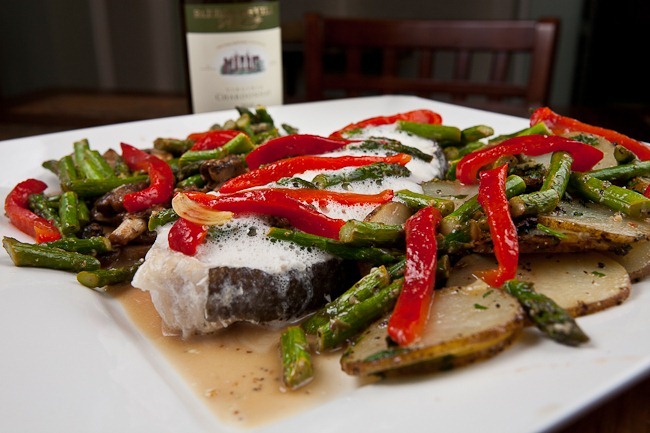
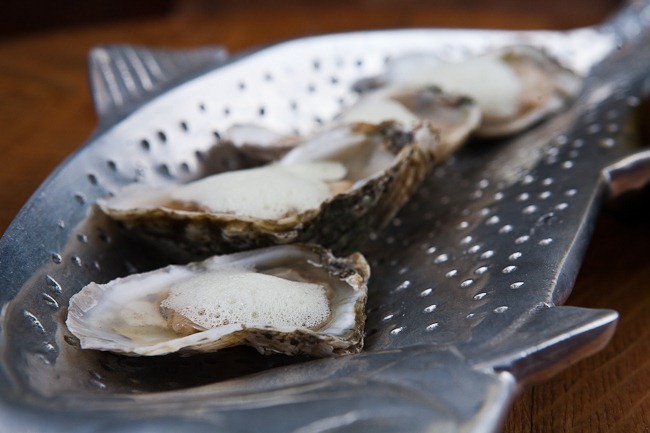
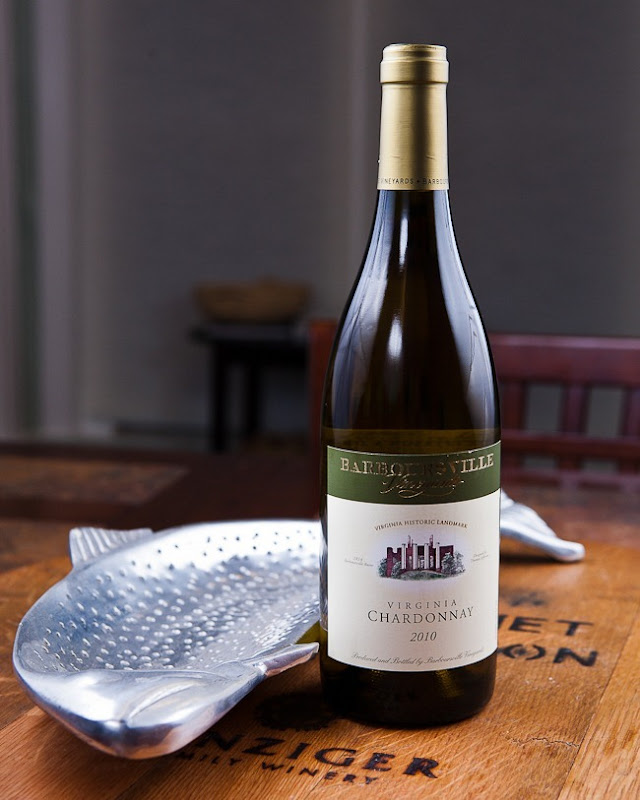
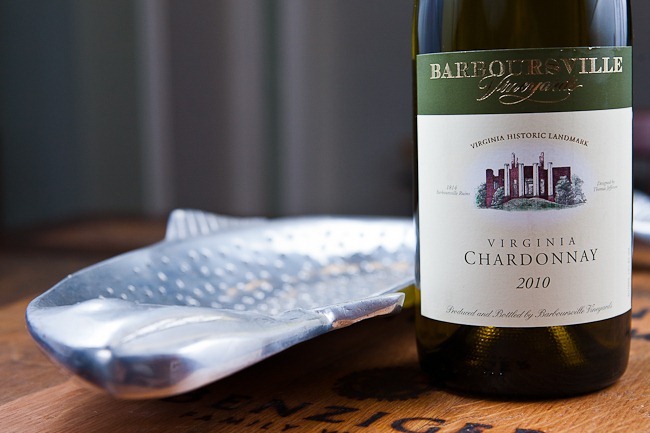
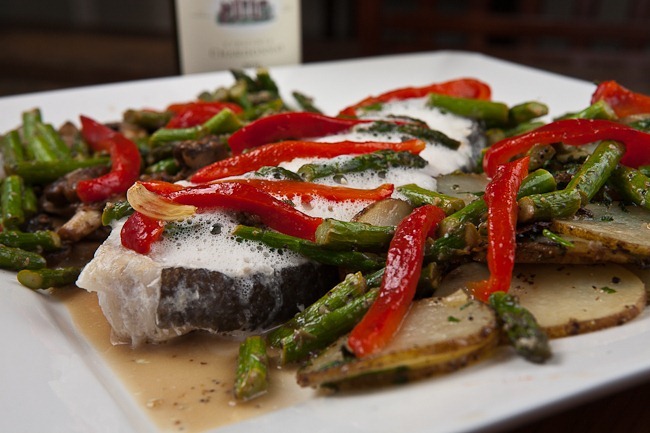
No comments:
Post a Comment